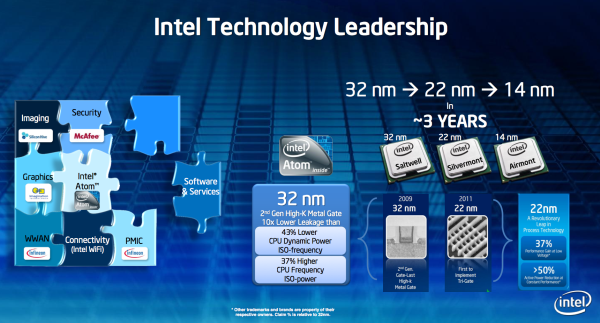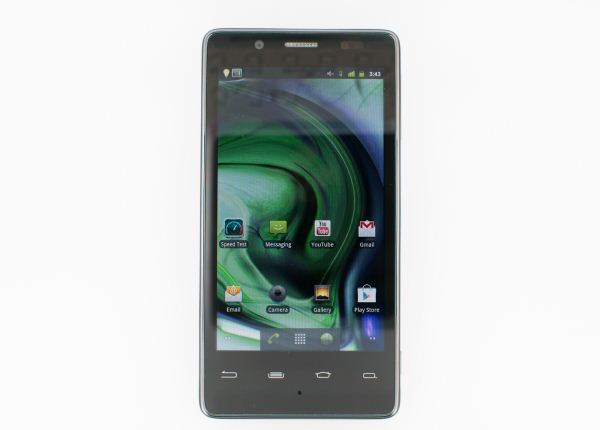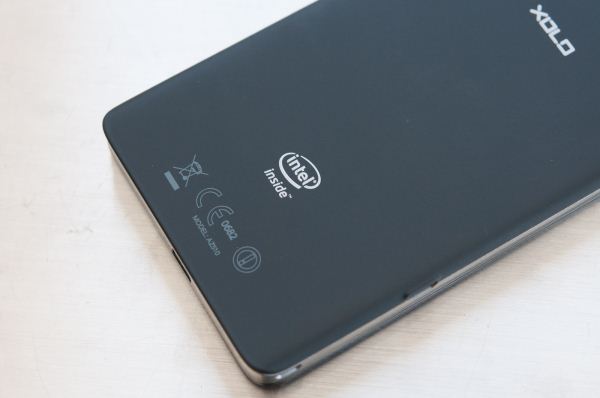Lava Xolo X900 Review - The First Intel Medfield Phone
by Brian Klug on April 25, 2012 6:00 AM ESTFor Intel, answering the looming ARM threat is obviously hugely important for the future, and it recognizes that - look no further than the restructuring of the Intel Architecture Group. The fire was lit with the impending arrival of Windows On ARM (WOA), at which point the line between traditional ARM-dominated smartphone/tablet SoCs and a real desktop class compute platform will start getting blurry, fast.
The other trend in the SoC space is slowly arranging all the pieces of the puzzle to truly deliver a complete System On Chip. In addition to CPU, GPU, and video encode/decode, those who will be the most successful and emerge as dominant players in the SoC space will need to bring baseband, GNSS, bluetooth, WLAN, and RF all onboard. Almost everyone gets that trend - Nvidia is adding baseband with Icera, Qualcomm has baseband and has added WLAN and Bluetooth with Atheros, Intel added baseband with Infineon and ISP with SiliconHive. Further, it has Gen graphics in the future for both GPU and video encode/decode. Look no further than the last slide of one of its slide decks and you'll see an illustration showing precisely what I'm talking about - pieces of the puzzle coming together.
We understand the motivation for building a smartphone SoC (computing is going even more mobile) and the integration necessary to get there (Intel owns a lot of IP blocks + Moore's Law), so how did Intel's first attempt fare? In short, reasonably well.
The Atom Z2460 in the X900 is a competent dual-core Cortex A9 competitor with competitive battery life and power draw, and no doubt Z2580 (its dual core, SGX544MP2 high end counterpart clearly targeted at Windows 8 platforms) will be equally as competitive against quad core A9s. If Intel's goal with both Medfield and the X900 was to establish a foothold in the smartphone SoC space and demonstrate that it can indeed deliver x86 in a smaller form factor and lower power profile than ever before then it truly is mission accomplished.
The x86 power myth is finally busted. While the X900 doesn't lead in battery life, it's competitive with the Galaxy S 2 and Galaxy Nexus. In terms of power efficiency, the phone is distinctly middle of the road - competitive with many of the OMAP 4 based devices on the market today. If you've been expecting the first x86 smartphone to end up at the bottom of every battery life chart, you'll be sorely disappointed.
There is however a big difference between middle of the road and industry leading, which is really the next step that we need to see from Intel. If Motorola is able to fit a 23% larger battery in a significantly thinner phone (Droid RAZR) then we need to see the same with Medfield. As Intel's major branded launch partner, we have high hopes that Motorola will deliver just that later this year.
The performance side is obviously even more competitive. Atom isn't always industry leading in our tests, but the X900 is rarely more than a couple places away from the top (with the exception of GPU performance of course, but that's a matter of licensing a different IP block in future versions). For a reference design that an Intel partner can just buy, barely customize, and ship - that's not bad at all. Smartphone vendors spend a considerable amount of time building phones that perform well - Intel's offer to internalize much of that can be either scary or amazing depending on who you're talking to.
There's always going to be room for design and software customization, but ultimately only those vendors who are good at those types of things will be able to survive if Intel's direct FFRD route succeeds. It's unsurprisingly very PC-like, where differentiation doesn't really happen at the motherboard level but rather at the system level. I can see both good and bad that could come of this, but the initial outcome should be positive. The results of this initial FFRD turned commercial device demonstrate that Intel is absolutely a competent system integrator itself, with an awesome display, camera, and other component choices.
The software compatibility story, like the concern over power consumption, is also a non-issue. The vast majority of apps we tried just worked, without any indication that we were running something intended for a different instruction set. There are still a few rough edges (e.g. Netflix), but if Intel is able to get things working this well at launch, the situation will only improve going forward.
Ultimately Intel's first smartphone is a foot in the door. It's what many said couldn't be done, and it's here now. What it isn't however is a flagship. To lead, Intel needs an updated Atom architecture, it needs to be on 22nm, and it needs a faster GPU - at a minimum. All of this needs to come in a reference design that's not just good enough, but better than the rest.
On the one hand it's a good thing that you can't tell an Intel smartphone apart from one running an ARM based SoC, on the other hand it does nothing to actually sell the Intel experience. Intel is never taken seriously in markets where it relies on being good enough, and it moves mountains in those where it's the best. That's what Intel needs to really build credibility in the smartphone space. A little was earned by getting this far, but its reputation will be made based on what happens next. There's obviously a strategy here, but I'm curious to see it unfold. Intel can be a fierce competitor in any space where it feels threatened. What I'm waiting for is that Conroe moment, but in a smartphone.
We waited years for Intel's first smartphone, now the question is how long do we have to wait for the first irresistable one?













106 Comments
View All Comments
superPC - Thursday, April 26, 2012 - link
Well this atom only has 1/4 of conroe dual core transistor count right now. a move to 22nm could bring conroe level performance.Khato - Thursday, April 26, 2012 - link
Remember, conroe class performance simply indicates a general IPC level. I don't expect something on par with an E8600, more like a SU9600. It's quite feasible on the 22nm LP process, and actually is roughly in-line with the one Atom performance roadmap from awhile ago.extide - Wednesday, April 25, 2012 - link
That wont be happening for a while, but from what I have heard 2013 will bring us a second gen (out-of-order) atom on a mature 22nm process. We should see 2Ghz+ clockspeeds and 2 cores, plus a healthy IPC boost. This is going to be an exciting battle to watch, the old Intel vs AMD gig is kind of stale, so its awesome to see a real challenge for Intel again!A5 - Wednesday, April 25, 2012 - link
ULV Haswell will have a TDP an order of magnitude too high for a phone form factor. Tablets, maybe.MonkeyPaw - Wednesday, April 25, 2012 - link
"We waited years for Intel's first smartphone, now the question is how long do we have to wait for the first irresistable one?"It wont matter. Intel will dump millions into advertising, and every single phone maker will have ads for their new x86 phones, ending with the usual Intel chorus.
dougys - Wednesday, April 25, 2012 - link
I read somewhere else a few weeks back that the iPhone 5 could have Intel Inside. However, something else I read suggested that if they were to do this all the apps would have to be re-written... Does anyone have any thoughts/insight?tipoo - Wednesday, April 25, 2012 - link
Apple has a few architecture changes under its belt, but I very much doubt it, not for this chip. Apple bought chip design companies and spends more on internal chip design year after year for good reason.Not sure about iOS compatibility but this chip can run any Android apps just fine as the article points out through binary translation, I think Android apps use Java and iOS uses C++ though so I'm not sure if that would still work.
If Apple was to go to an outside design for its chips (which I highly doubt it will) I'd hope it would be for Qualcomm, Krait is amazing.
dcollins - Wednesday, April 25, 2012 - link
Apple will not move to an Intel chip anytime soon because they have been very successful in designing their own SoC. Just look at the battery life benchmarks: Apple crushes everyone in Hours/Watt*Hour. Plus, doing it in house gives them more flexibility on the overall design of their boards.There is a small chance of Intel manufacturing chips for Apple, but that is a long shot as well. Chips manufactured on Intel's 22nm 3d gate process would be incompatible with chips produced on competing 28nm processes (different physical size) and Apple is traditionally opposed to single sourcing crucial components.
tipoo - Wednesday, April 25, 2012 - link
Why does the GN get worse flash performance than the Nexus S and even Nexus One? That isn't a resolution dependant test, right?I'm also curious why the dual core Atrix barely does better than the single core Nexus S in Vellamo, was that just a bad SoC design or is it because it runs an older OS?
tipoo - Wednesday, April 25, 2012 - link
I also just got 915 on my Nexus S rather than 622, but I'm using an unofficial Cyanogenmod 9 build from XDA forums.